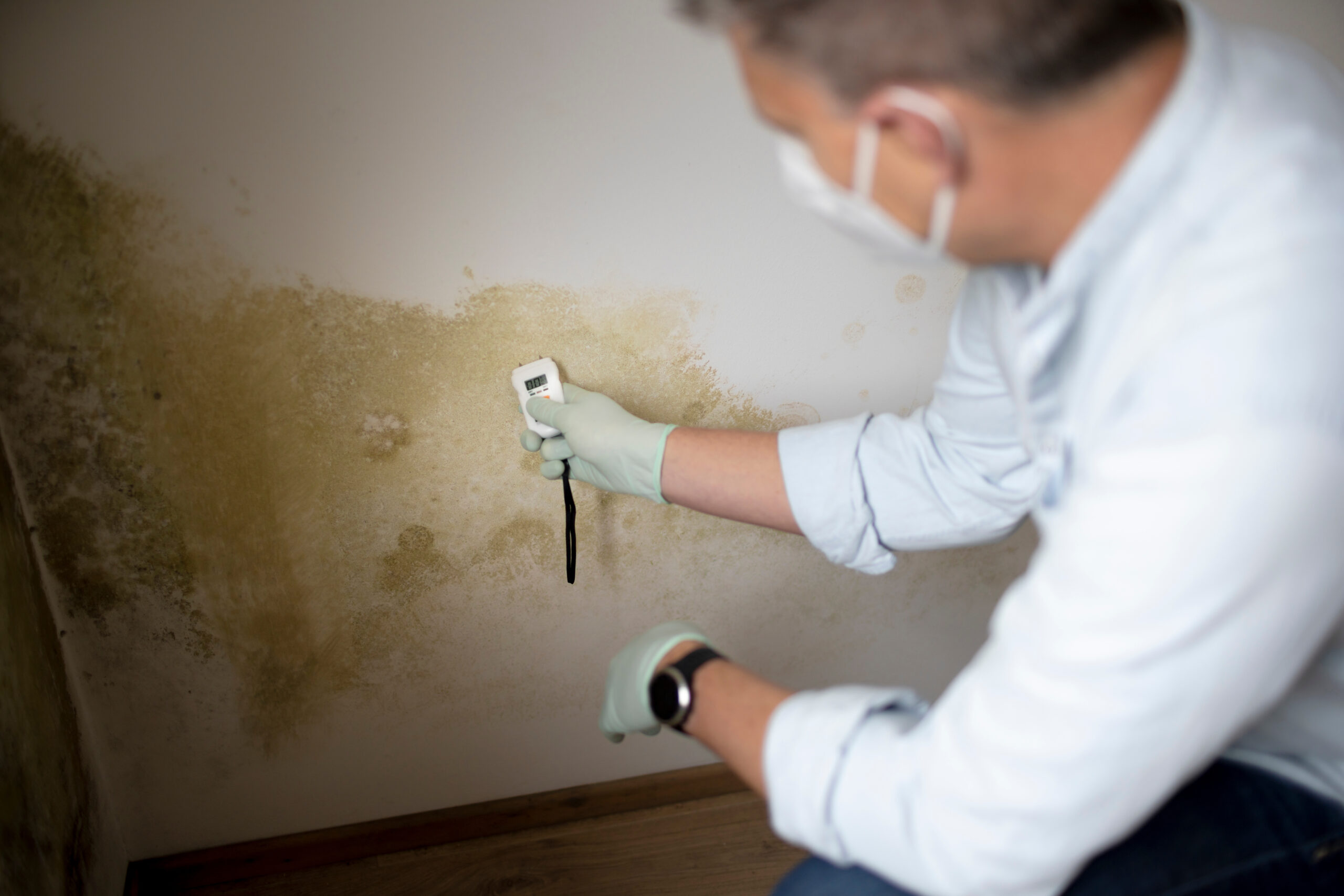
Step 1: Review Your Homeowners Insurance Policy
The first step in filing an insurance claim for mold remediation is to review your homeowners insurance policy. Not all policies cover mold damage, and even if yours does, the coverage may be limited or only apply in certain circumstances. Most standard homeowners insurance policies cover mold remediation if the mold is the result of a covered peril, such as water damage from a burst pipe or a leaky roof caused by a storm. However, mold caused by poor maintenance, such as high humidity or slow leaks, is typically not covered.
Here’s what to look for when reviewing your policy:
- Perils Covered: Check if your policy covers water damage from perils like plumbing leaks, storms, or sudden appliance malfunctions. If mold results from one of these covered perils, you may be eligible for reimbursement.
- Mold-Specific Coverage: Some policies include mold-specific endorsements that offer additional coverage for mold remediation. Look for any mold-related clauses or add-ons that may apply.
- Coverage Limits: Many policies have limits on how much they’ll pay for mold remediation. Be sure to check if there’s a cap on the amount of coverage available for mold damage.
If you’re unsure about what your policy covers, contact your insurance agent for clarification. Understanding your policy will help you determine whether you can file a claim and what expenses might be covered.
Step 2: Document the Mold Damage

Proper documentation of the mold damage is crucial to support your insurance claim. The more detailed and thorough your documentation is, the easier it will be to prove the extent of the damage and its cause. Follow these steps to document the mold issue in your home:
1. Take Photos and Videos
Photograph and record videos of all areas affected by mold. Be sure to capture close-up images of the mold growth, as well as wider shots showing the damage to walls, ceilings, floors, and personal belongings. Don’t forget to document the source of the moisture if it’s visible, such as a leaking pipe or water damage from a storm.
2. Keep Records of Repairs and Maintenance
If you’ve made any repairs to your home in response to the mold issue, such as fixing a leak or removing water-damaged materials, keep records of these repairs, including receipts, invoices, and any communications with contractors. This documentation shows that you took immediate action to mitigate the damage, which may strengthen your claim.
3. Create a Written Report
Write a detailed report describing the mold damage, when you first noticed it, and any steps you’ve taken to address it. Include information about the cause of the mold, such as a burst pipe or roof leak, and note any ongoing moisture issues. This report can be a valuable reference for both you and the insurance adjuster during the claims process.
Step 3: Contact Your Insurance Company

Once you’ve reviewed your policy and documented the mold damage, contact your insurance company as soon as possible to report the issue. Most insurance policies require you to report damage promptly, and waiting too long could jeopardize your claim. Here’s how to get the claims process started:
1. File a Claim
Call your insurance company’s claims department or use their online portal to initiate the claim. Provide all necessary details about the mold damage, including the suspected cause, the extent of the damage, and any steps you’ve taken to prevent further damage. Be sure to mention if you’ve already made temporary repairs, such as fixing a plumbing leak, to mitigate the situation.
2. Schedule an Inspection
Your insurance company will likely send an adjuster to your home to inspect the mold damage and determine whether it’s covered by your policy. Be prepared to provide the adjuster with all your documentation, including photos, videos, receipts, and your written report. The adjuster’s assessment will play a key role in determining whether your claim is approved and how much you’ll be reimbursed for mold remediation costs.
Step 4: Hire a Professional Mold Remediation Company

Once your claim is in progress, it’s time to hire a professional mold remediation company to assess and remove the mold from your home. Your insurance company may require you to hire a licensed and certified remediation contractor to qualify for coverage. Be sure to choose a reputable company with experience in mold removal and restoration.
The mold remediation company will inspect the extent of the damage and provide a detailed estimate of the work required, including any necessary repairs to prevent future mold growth. If the mold is widespread or has caused significant damage, you may need to relocate temporarily while the work is being completed.
Step 5: Mitigate Further Damage
While you wait for your insurance claim to be processed, it’s important to take steps to prevent the mold damage from worsening. Many insurance policies require homeowners to take reasonable action to mitigate further damage after an incident occurs, so failing to do so could hurt your claim.
1. Stop the Source of Water
If the mold is caused by water damage, such as a leaky pipe or roof, immediately stop the water source by turning off the water supply or making temporary repairs to the roof. This will help prevent further water intrusion and mold growth while you wait for the insurance adjuster and mold remediation professionals to address the issue.
2. Dry Out the Affected Area
Use fans, dehumidifiers, or air movers to dry out the affected areas as much as possible. Removing excess moisture will help slow the spread of mold and reduce further damage. Be careful not to disturb the mold itself, as this could release spores into the air, making the problem worse. Leave the mold removal to the professionals.
Step 6: Work With the Insurance Adjuster

During the claims process, you’ll need to work closely with the insurance adjuster to ensure your claim is handled properly. Be prepared to provide any additional documentation or information requested by the adjuster. Here’s how to facilitate a smooth process:
1. Be Present During the Inspection
When the adjuster comes to inspect the mold damage, it’s a good idea to be present so you can point out any areas of concern and provide your documentation. This ensures that the adjuster has a full understanding of the extent of the damage and the steps you’ve taken to mitigate it.
2. Get a Detailed Estimate
The adjuster will provide you with a written estimate of the repair and remediation costs. Review the estimate carefully and compare it to the mold remediation company’s quote to ensure all necessary repairs are covered. If the adjuster’s estimate seems too low, you can negotiate or provide additional documentation to support your claim.
Step 7: Complete the Mold Remediation
Once your insurance company has approved your claim, you can proceed with the mold remediation process. Work with your chosen mold remediation company to schedule the necessary work and ensure that it’s completed according to the plan laid out by the adjuster. Be sure to keep records of all work completed, as well as any additional expenses incurred during the process.
Step 8: Follow Up With Your Insurance Company
After the mold remediation is complete, follow up with your insurance company to ensure you receive the appropriate reimbursement for your claim. Provide the final invoices and receipts from the mold remediation company, along with any other documentation requested by your insurance provider. Once everything is submitted, the insurance company will issue payment based on the terms of your policy and the agreed-upon settlement.
FAQ
| Question | Answer |
|---|---|
| Does homeowners insurance cover mold remediation? | Homeowners insurance may cover mold remediation if the mold was caused by a covered peril, such as water damage from a burst pipe or storm. However, mold caused by maintenance issues, such as poor ventilation or high humidity, is typically not covered. |
| What should I do if my insurance claim for mold remediation is denied? | If your claim is denied, review the reasons for the denial and check your policy to see if you have grounds to appeal. You can also hire a public adjuster to help negotiate with the insurance company or seek legal assistance if necessary. |
| How long does the insurance claims process take? | The length of the claims process varies depending on the complexity of the claim and the insurance company’s procedures. It can take anywhere from a few weeks to several months to receive a settlement. |
| What is the average cost of mold remediation? | The cost of mold remediation depends on the extent of the damage and the size of the affected area. On average, mold remediation can cost between $1,500 and $3,500, though larger or more severe cases may be more expensive. |
| Can I clean up mold myself before filing an insurance claim? | For small, localized mold problems, you may be able to clean the area yourself. However, for larger or widespread mold issues, it’s best to leave the cleanup to professionals, especially if you’re filing an insurance claim. |
If you’re dealing with mold damage and need professional assistance, contact Citywide Mold Mitigation today for expert remediation services.

